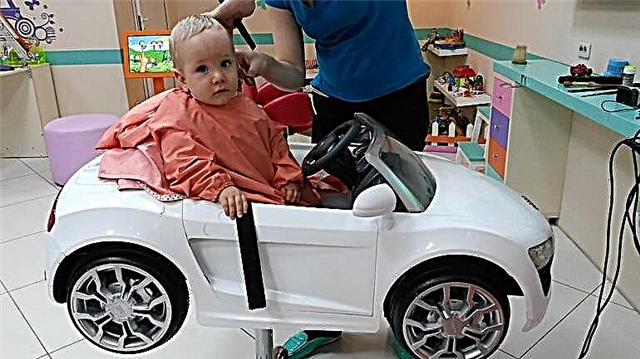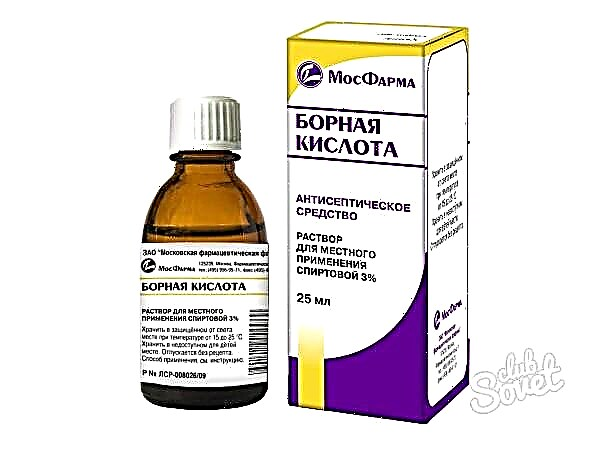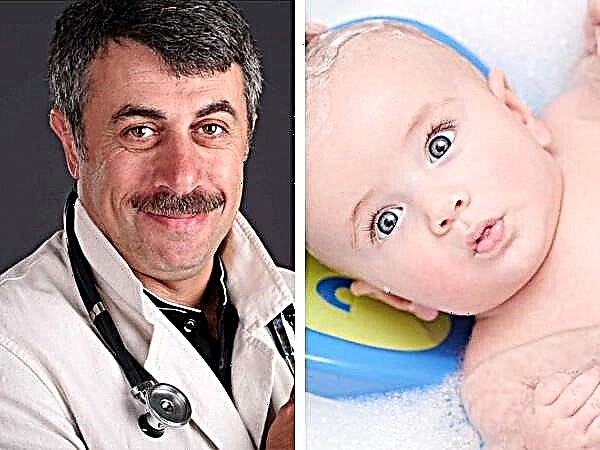
Involuntary contractions of the muscles of the body are common in newborn babies. Tremor can be both physiological and pathological. This article will help you understand the nuances of this state in crumbs.

What it is?
Multiple contractions of different muscle groups in newborns are involuntarily called tremors. This condition occurs in children's practice almost every day. When a tremor appears, it is very important to distinguish at what time it occurs, and also whether it is pathological.
Tremors can be noticed on their own. In the baby, individual parts of the body begin to shake strongly. In some cases, there can be several hundred small fluctuations in one minute. Their amplitude is usually small. Sweeping tremor occurs only in pathological neurological conditions. As a rule, it is a tremor with a small amplitude of the vibrations that occurs most often in newborn babies.

The most common manifestation of this condition is trembling of hands and feet, chin and parts of the face. Head tremor is less common, however, it is considered one of the important symptoms of a problem in the neurological status of infants. Tremors become less common after a year. The appearance of this condition at an older age indicates the presence of functional disorders, more often caused by pathologies in the nervous system.
Many scientists have tried to find an answer to the question of what changes in the child's body occur during tremors. It turned out that the appearance of involuntary contractions is influenced by the immaturity of the nerve centers. This is especially evident in premature babies. Babies born before the due date are prone to the appearance of various types of tremors much more often than babies who were born on time. Imperfection of the functioning of the nervous system leads to the fact that babies in the first months of life easily develop various multiple muscle contractions.
Some scholars believe that the appearance of tremor occurs when the concentration of norepinephrine in the child's body increases. This hormone, synthesized by the adrenal cortex, is responsible for the transmission of nerve impulses. An increase in its concentration in the blood promotes faster arousal and active muscle contractions.

Causes
The development of different clinical forms of tremor is caused by the influence of various causes. As a rule, they act even during intrauterine development. This explains the appearance of tremors in babies in the first months after birth. This condition can develop even in a completely healthy child. Any tremor in a newborn baby is a reason for consulting a pediatrician.

The child's appearance of involuntary body contractions is caused by the influence of the following causal factors:
- Imperfect work of the nervous system. More often, neurological disorders are found in babies born before the due date. In this case, organogenesis is disturbed - the process of organ formation. The shortening of the period of intrauterine development leads to the fact that the organs of the nervous system simply do not have time to form properly. After birth, this is manifested by the appearance of a tremor in the baby, which often affects the limbs or certain parts of the face and head.
- Dysfunction of the endocrine glands. Disrupted adrenal function leads to an increase in norepinephrine levels. This state provokes the appearance in the child of involuntary muscle contractions of various amplitudes. Most often, such situations occur in premature babies or those with congenital diseases of the endocrine glands. Tremors can be manifested by twitching of the lower jaw, tongue, lower lip, hands, and other areas of the body.
- Physiological reasons. Body tremors can occur in babies and are normal. During sleep or upon awakening, a newborn baby may feel involuntary muscle contractions. This is a completely normal situation and does not require medical attention. It is associated with a functional feature of the nervous system. As the child grows up, the organs of the central nervous system will normalize their work, and the tremor will completely disappear.


- Oxygen hypoxia (tissue starvation) during intrauterine development. Various abnormalities of pregnancy, abnormal presentation of the fetus, chronic diseases of the mother - all these pathologies cause disturbances in the supply of oxygen to the child's body with blood flow. A decrease in the concentration of this vital substance contributes to the development of tissue hypoxia. Prolonged oxygen starvation significantly disrupts organogenesis and the formation of nervous tissue.
- Increased muscle tone. This condition occurs in newborn babies quite often. Impaired coordination of movements in young children can also be associated with hypertonicity. After a while, it completely disappears, and the tremor disappears. Hypertonia is usually found in babies in the first months of life.
- Birth trauma. The entanglement of the fetus with the umbilical cord, prolonged standing in the pelvic cavity while passing through the birth canal, weakened labor activity - all these pathological conditions contribute to pronounced hypoxia of the brain and nerve cells, which leads to involuntary contractions of individual muscle groups in the baby.
- Emotional mood of a pregnant woman. European scientists have conducted a number of experiments, which indicate that the mood of the expectant mother has a very strong effect on the intrauterine development of the fetus. The more nervous and stressed a pregnant woman is, the more likely she is to give birth to a baby who has problems with involuntary muscle contraction.
Kinds
Tremor can be physiological and pathological. A benign or physiological variant is found in completely healthy newborn babies. It can occur at any time of the day after exposure to a number of reasons. So, to the appearance of involuntary tremors of the lower jaw, face and upper half of the body leads to strong hacking crying.
When a newborn baby cries, you may notice that some parts of his body begin to actively contract. This physiological response to emotional or physical pain is normal.
Also, some babies develop tremors during sleep. This phenomenon usually occurs in the fast phase. It is at this time that the child dreams. The activity of the brain in this phase of sleep is maximum, which causes the appearance of dreams in the head. Active events occurring in a dream appear in babies in the form of various clinical variants of tremor. This condition is also a variant of the norm and does not require special treatment.

Pathological options are found when a child has various diseases. Especially often, diseases of the nervous system, including diseases of the brain, lead to the development of tremors in babies. In newborn babies, such conditions are mainly congenital.
To eliminate unfavorable symptoms in this case, it is required to carry out the treatment of the underlying disease, which contributed to the appearance of involuntary muscle contractions.
In some cases, severe pathologies of the endocrine system lead to the appearance of tremors in the smallest patients. It should be noted that the prevalence of these diseases is very low. They are found equally often in both boys and girls. These disorders are manifested not only by tremors, but also by many other systemic disorders. You can identify these diseases by contacting a pediatric endocrinologist.

Severe fright can also cause the baby to contract involuntarily. The baby in the first months of his life has a still fragile nervous system, therefore he reacts to all external stimuli quite sharply. Even a small factor can lead to involuntary muscle contractions in the child. A child aged 4-5 months reacts less violently to external stimuli.

Effects
With normal physiological tremor, no negative long-term consequences arise. All involuntary muscle contractions pass on their own by 3-4 months of a child's life. To eliminate the tremor in this case, the use of drugs is absolutely not required. It passes on its own as the nervous system "matures".
Some one-year-olds may show slight signs of tremors. Typically, such residual symptoms remain in premature babies or babies with congenital defects in the development and functioning of the nervous system. In this case, a specialist consultation is required.
The doctor will conduct a clinical examination of the child and determine the further tactics of managing the baby with neurological symptoms.

Who should I contact?
When a tremor appears in a baby, be sure to show the baby to a pediatric neurologist. This consultation is essential for all children with involuntary muscle contractions. A neurologist assesses the child's condition and identifies signs of pathological conditions in him. In some cases, additional diagnostic methods may be required. They are used mainly to establish signs of organic pathologies of the brain and nervous system.
If the baby's tremor is physiological, then the doctor will give the parents all the necessary recommendations that will help prevent the transition of this condition into a pathological form. Usually these tips are pretty simple. Almost all recommendations can be followed at home. If signs of endocrine pathology are detected in a child, it must also be shown to a pediatric endocrinologist. In some cases, additional examination is necessary to establish the correct diagnosis.
Babies with physiological tremors are monitored mainly by local pediatricians. During regular visits, these specialists assess the health status of newborn babies, as well as review the dynamics of their individual development.
When any, even a slight deterioration in health appears, district pediatricians refer such children to a pediatric neurologist for a correction of management tactics.

Medicines for treatment
Physiological variants of tremor do not require treatment. For optimal development of higher nervous activity, doctors recommend:
- Continue breastfeeding as long as possible. Mother's milk is a unique biological product that contains all the components necessary for the growth and development of a baby. Proteins, fats and carbohydrates are contained in it in an ideal ratio. Long-term breastfeeding has a positive effect on the development of nerve tissue, and also improves cell differentiation. Babies who receive breast milk fall asleep well and develop quite intensively.
- Observe the daily routine. Breastfeeding should be done on demand. At night, the baby should sleep. A good rest is very important for its growth and development. From the very first days of a child's life, the correct daily routine should be built.
- Monitor the duration of the rest. Your night's sleep should start at about the same time. It is quite difficult to perform this task in a newborn baby. However, observing this rule on a daily basis will significantly improve the functioning and development of the nervous system. During the day, the newborn baby should also rest.

- Massage. With physiological tremor, it can be done independently at home. Doctors recommend massage at a time when the child is as relaxed as possible. All movements performed during the procedure should be as smooth as possible, with a small amplitude. Massages can be performed daily. Try to make this procedure pleasant and comfortable for the child.
- Walks in the open air. For the active development of the nervous system, it needs a sufficient amount of oxygen. Doctors recommend taking walks with newborn babies every day. For such walks, you should choose the optimal clothing for the weather. It is not worth overheating or wrapping up the baby too much, as this will only contribute to the violation of thermoregulation.
- Positive attitude. Many parents make the mistake of believing that their newborn baby is not responding to their behavior. From the very first days of life, a child is well aware of all the emotions that are directed towards him. If the parents are in too upset or depressed mood, then the baby will perfectly recognize this. For the active growth of the child and the correct psycho-emotional development, positive emotions and the manifestation of parental care and love are very important.
- In some cases, to eliminate the adverse symptoms of tremor, it is already necessary to prescribe special medications. They are mainly used when the child has any neurological disorders. These medications are prescribed by a pediatric neurologist after a clinical examination of the baby. Prescription of drugs is usually carried out at a course reception.
Medicines are usually prescribed for the following pathologies, which can cause tremors in newborns:
- infectious sepsis;
- organic encephalopathy of various origins;
- hyperkalemia;
- hyperglycemia;
- intracranial hypertension;
- hypocalcemia;
- hemorrhage in the brain tissue.


To improve nervous activity in children, the following can be used: "Glycine", "Cinnarizin" and other drugs. Dosage, duration of course use and frequency of use are determined by the attending physician. To improve the functioning of the nervous system, drug therapy is usually combined with various non-drug methods. One of them is medical massage. It is conducted by a specialist who has the skills to work with the smallest patients.


The best place for a massage is at home. In the conditions that are familiar to him, the baby feels more relaxed and balanced. In this case, massage has a greater effect, since during the procedure the child is completely relaxed. Having a mother nearby also has a positive effect on the result. The massage is usually carried out on the changing table.
During the procedure, the pediatric masseur talks to the child, which also has a positive effect on the baby's nervous system. The duration of the procedure may vary. It depends on the initial state of the child, his age, and whether he has concomitant neurological disorders. Usually, the procedures are carried out in courses. One treatment cycle usually consists of 12-15 sessions.
Each procedure necessarily ends with stroking. It helps relieve muscle tension and improves the child's mood. Correctly selected massage techniques lead to an improvement in nervous activity and also have a positive effect on muscle tone.The procedure is usually carried out using special children's cosmetics, which do not contain any aggressive chemical components and fragrances.
When choosing a specialist to massage your child, try to pay attention to their educational background and experience with newborn babies.

Gymnastics is another technique that allows you to relieve muscle tension and eliminate involuntary muscle contractions. The most pronounced results have procedures held in water... Usually, newborn babies perceive such activities with great interest and willingly engage in them. At home, water gymnastics can also be carried out, however, it is better to do this under the supervision of a specialist.

For excitable babies, various baths are suitable. It is better to spend them in the evening, before the child goes to bed. Adding decoctions of various medicines to a hygienic bath will not only have a calming effect on the nervous system, but will also have a general strengthening effect. Suitable for this purpose: chamomile, lemon balm, lavender, sedative fees.
When choosing plants, parents should be as careful as possible. Some babies with individual sensitivity to various herbs may develop an allergic reaction on the skin.
In this case, the use of this medicinal plant should be canceled and replaced with another. Before that, you should definitely consult your pediatrician.

For the optimal development of the nervous system, the psycho-emotional state of the family is very important. If parents treat their newly born baby with proper love and care, then the chance of acquired neurological abnormalities is significantly reduced. The correct mental development of a baby in the first months of life is impossible without regular positive emotions.
High-quality care of a newborn reduces the risk of developing dangerous neurological pathologies in him in the future.

For information on what treatment for this type of disorder is recommended by Dr. Komarovsky, see the next video.
Prevention
The development of tremors in newborns is caused by a variety of causes. Many of them begin to act on the child's body even during the period of intrauterine development.
To prevent congenital neurological disorders, which are often the causes of tremor in newborn babies, it is very important to follow all the recommendations of doctors even at the stage of pregnancy.
A pregnant woman should definitely eat right, walk in the fresh air and avoid stress.
All emerging exacerbations of chronic diseases or infectious pathologies must be treated. During intrauterine development, the fetus is connected by a single circulatory system with the mother. Any infections pass well through the placenta and reach the child's body. Intrauterine infection often causes neurological abnormalities in the baby in the future. Prevention of infectious diseases during pregnancy helps prevent the development of tremors and neurological problems after the birth of a baby.




